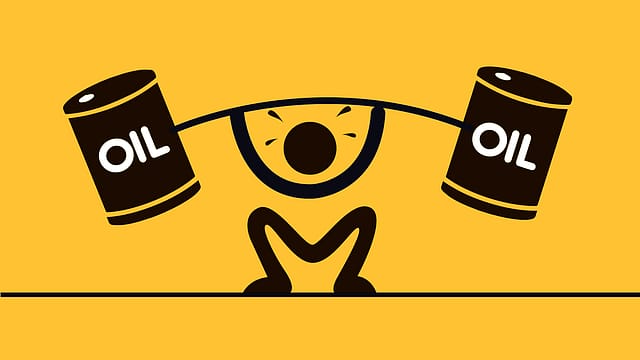RBI dreads crude oil prices, again
ADVERTISEMENT

The six-member monetary policy committee (MPC) may have surprised the market by their policy action on June 6, but minutes of the meeting reveal more pain may be in store.
The MPC at its meeting on June 4-6 decided to raise the repo rate (the rate at which the Reserve Bank of India or RBI lends to a commercial bank) by 25 basis points (bps). The minutes reveal that the MPC had to tame inflation, while rising crude oil prices have the committee worried.
For the RBI, managing inflation is a clear priority. In 2016, under Raghuram Rajan’s watch, the RBI formally adopted flexible inflation targeting. And worries are on the rise on the inflation front. “Since the MPC’s meeting in early April, the price of Indian basket of crude surged from $66 a barrel to $74,” the RBI said in its policy outlook. “Crude oil prices have been volatile recently and this imparts considerable uncertainty to the inflation outlook—both on the upside and the downside.”
According to the minutes, MPC member Ravindra Dholakia, a professor at the Indian Institute of Management, Ahmedabad, oil prices have further firmed up and geopolitical developments indicate that no respite was likely soon. External member Chetan Ghate, a professor of macroeconomics at the Indian Statistical Institute-Delhi Centre, also saw oil as a major upside risk to the one-year retail inflation projections. While a strong dollar and the price of oil usually follows an inverse relationship, in Ghate’s opinion the usual “coupling” had been confounded by geopolitical events in recent months.
December 2025
The annual Fortune 500 India list, the definitive compendium of corporate performance, is out. This year, the cumulative revenue of the Fortune 500 India companies has breached $2 trillion for the first time. Plus, find out which are the Best B-schools in India.
Michael Debabrata Patra, RBI’s executive director, said there was an urgent need to hike the rate. “The prolonged period of staying on hold is denting the credibility of the MPC’s commitment to maintaining inflation at the centre of the target band.”
RBI deputy governor Viral Acharya, who is in charge of monetary policy, pointed to the RBI’s Inflation Expectations Survey of households which revealed hardening of inflation expectations, where the three-month and 12-month inflation expectations have increased by 90 bps and 130 bps, respectively. “A key uncertainty at present relates to the oil price development over the medium-term horizon that monetary policy operates at.”
RBI Governor Urjit Patel, who was overall bullish about the growth prospects of the economy, said: “The recent increase in oil prices, by impacting disposable incomes, may have some adverse impact on private consumption.”
However, economists beg to differ. Indranil Sen Gupta, economist and co-head, India research at Bank of America Merrill Lynch (BofA ML), in a June 21 report co-authored with Aastha Gudwani, BofA ML’s India economist, chose to call the minutes dovish. The BofA ML economists noted that they would have preferred that the MPC had waited out growth/inflation base effects rather than hike rates at this stage of recovery. “Still, this puts policy uncertainty out of the way.” In fact, the retention of a neutral stance, in the duo’s view, should indicate that this is not a tightening cycle. “Both growth and inflation have gone up on base effects that will fade by September,” they said.
Sonal Varma, Nomura’s Singapore-based economist, in a report co-authored with Nomura’s Mumbai-based economist Aurodeep Nandi, said the minutes suggest the MPC remains “data dependent” and does not see the June hike as the start of a meaningful tightening cycle. “Indeed, MPC members retained their neutral stance due to ‘uncertainty’ on oil prices, among other factors,” Varma and Nandi noted in their June 20 report. “There has been no clarity on whether a hike will be delivered in August, which, in our view, will depend on how oil prices, core inflation and inflation expectations behave in the run-up to the meeting,” the duo said. “We believe the RBI will look to front-load its tightening by hiking the repo rate by 25 bps in August, before voting to pause.”
A rate hike or not, it is certain that crude oil will give strong shocks to the RBI, as it does every time prices go up.
